Heading out the door? Read this article on the new Outside+ app available now on iOS devices for members! Download the app.
Plan a reasonable route.
Efficient paddlers can expect to travel at least 10 miles a day on flatwater and 12 to 15 miles in a gentle downstream current. A headwind can significantly slow your pace, though, so beginners should pick routes with abundant camping options.
Pack for a capsize.
Stow your tent, sleeping bag, and clothes in watertight drybags—ones with shoulder straps and hipbelts make portaging a cinch. Leave a small air pocket in your bag before sealing to increase buoyancy. Keep small essentials like your camera and sunscreen accessible in a small drybag lashed to the canoe. Secure loose items like water bottles for rapids, and always bring an extra paddle.
Check seasonal conditions.
Water levels can change quickly due to snowmelt, precipitation, and dam releases. Speak with local outfitters or rangers to ensure your route is safe and passable before heading out, and always use the most current information to mark portages, rapids, and campsites on your map.
Balance your boat.
Keep weight as even as possible (both left to right and front to back) to ensure your canoe is stable and tracks straight. Place heavy items in the center, between the yoke and thwart (the wooden brace secured between the gunwales at the canoe’s middle). Maintain a low center of gravity by keeping gear tucked below the gunwales.
Know what’s ahead.
Keep your map accessible at all times (store it in a transparent case or zip-top bag). You can sometimes scout minor rapids from the boat, but should always pull over to check out whitewater class II or higher—or any place where obstacles and currents are unknown. A loaded canoe is slow to maneuver, so react early to hazards. Or, run tricky sections with an empty boat (portage your gear) for easier steering.
Paddle efficiently.
Sit up comfortably and paddle on the opposite side of your partner. The person in the stern (back) steers, while the bow paddler acts as the motor and makes quick adjustments in fast water. Hold the paddle’s T-grip so that your four fingers wrap over the top and your thumb wraps underneath. Grasp the shaft with your bottom hand as you would hold an ice cream cone. Keep the paddle nearly vertical as you hinge at the waist to draw the blade back (see right for more paddling tips).
Portage right.
Grasp the gunwales or brace your arms out in front of you for balance. Allow the weight of the boat to drop in the back so you can see.
To put the boat down, gently toss it up so your head clears the portage yoke, and lower it to your side with control.
Your pack or PFD can provide padding where the weight rests on your shoulders.
Portage trails link lakes and skirt obstacles like rapids or dams. They’re usually marked on maps and by signs on the bank.
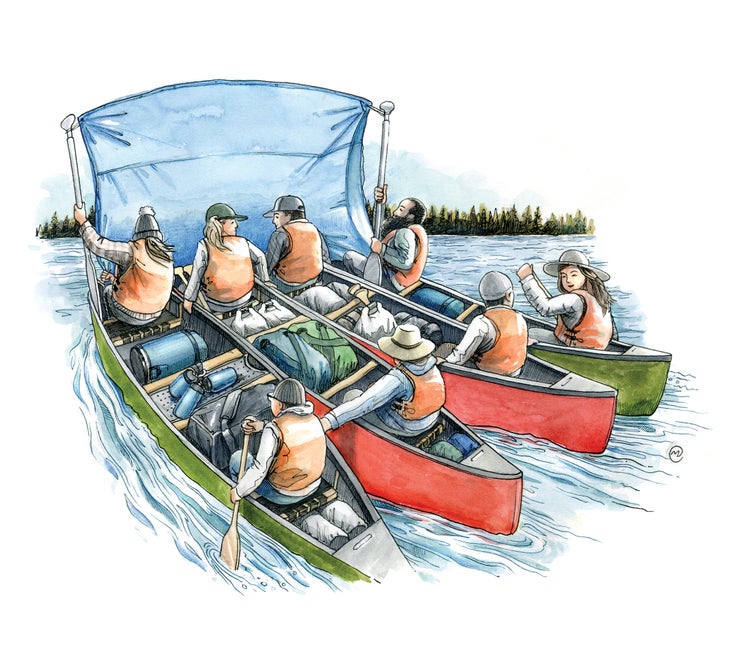
Put the wind to work.
Paddling’s fun, but covering miles while you lounge with a cold drink is hard to beat. Catch a break by taking advantage of tailwinds and setting sail on open lakes (frequent turns make sailing difficult on rivers). A 5- to 8-mph tailwind is ideal for sailing (anything faster creates chop). Look for breeze-driven riffles—not whitecaps.
In a group, join boats together. Hold onto your neighbors’ gunwales or hook a leg into their boat to stay close. Tie two paddles to the corners of a tarp or rainfly (for sailing in a single canoe, a rain jacket works). Those in the bow should hold the paddles upright to hoist the sail. Stern paddlers steer.
Paddle like a pro.
Whether you want to cover long distances or navigate whitewater, master these basic strokes to get started.
Forward paddle
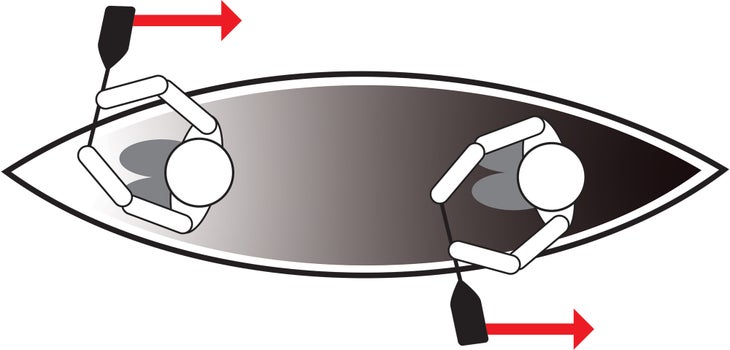
Both bow and stern paddlers default to this stroke. Turn your torso slightly to reach over the gunwale. Dip the entire blade in the water and pull toward the stern, generating power from your torso and back. Lift the blade out of the water at your hip. Feather the paddle to clear the water (hinge your wrist so the blade becomes parallel with the surface) while you bring it forward to the starting position. Reverse the motion (backpaddle) to go backward.
Rudder
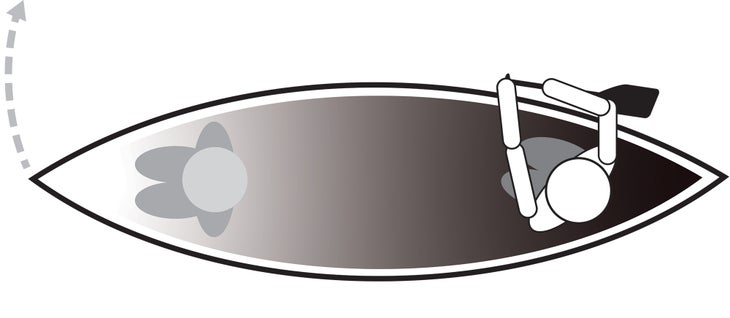
The stern paddler rudders to turn the boat to the paddle side. Dip your blade at your hip and brace it against the gunwale.
Sweep
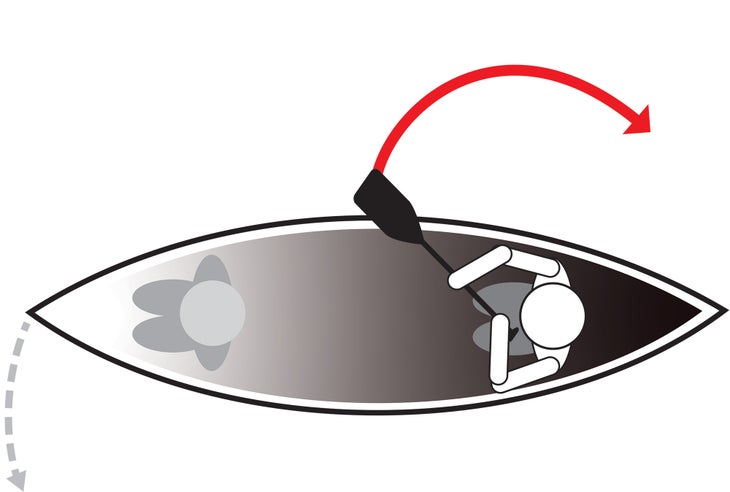
The stern paddler uses the sweep to turn the boat away from the paddle side. Reach as if to forward stroke. Instead of pulling the blade straight back, trace an arc away from the boat.
Draw
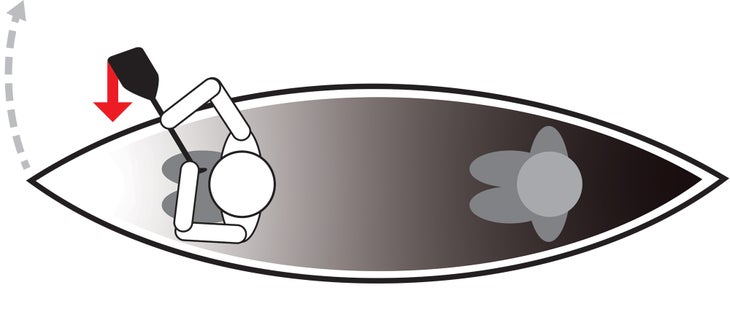
Use this stroke to make quick adjustments from the bow. Reach over the gunwale and dip the blade so it faces the boat. Pull it straight toward you—the bow will turn to that side. To go the other way, cross-draw: Twist to reach over the opposite gunwale without swapping hand positions and pull.
